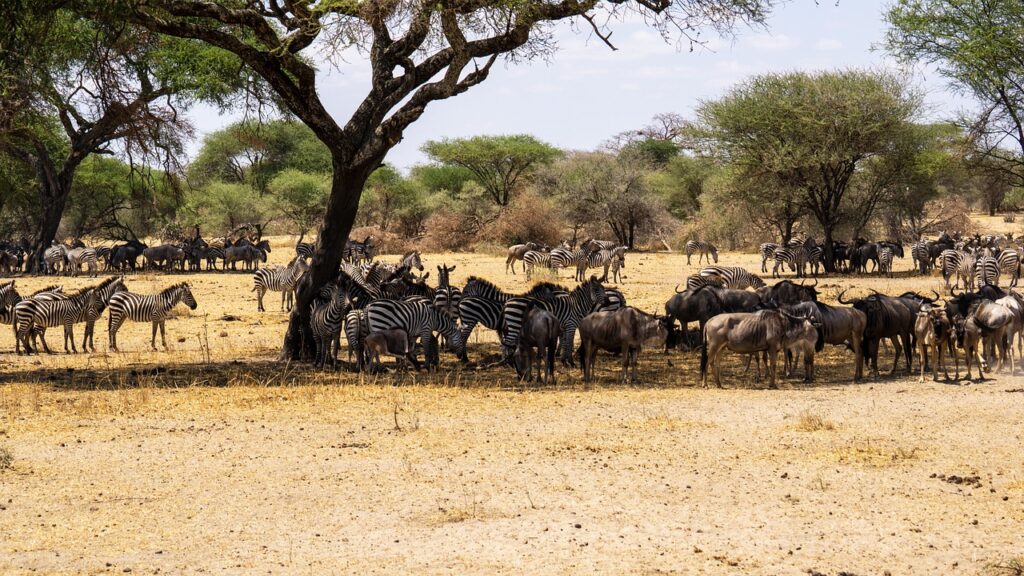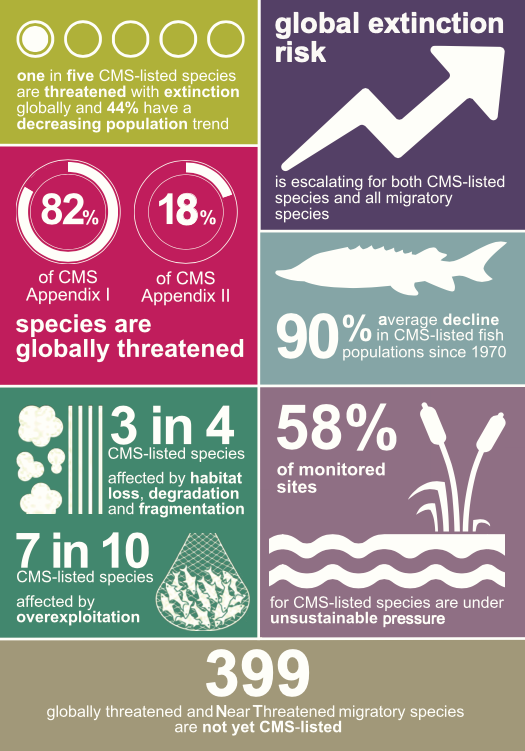
The deteriorating status of migratory species is being driven by intense levels of anthropogenic pressure. Due to their mobility, their reliance on multiple habitats, and their dependence on connectivity between different sites, migratory species are exposed to a diverse range of threats caused by human activity. Most migratory species are affected by a combination of threats, which often interact to exacerbate one another.
Also read:
- Migratory species: Why are they important?
- Landmark UN report reveals ‘shocking’ state of migratory species
Habitat loss, degradation and fragmentation (primarily driven by agriculture), and overexploitation (hunting and fishing, both targeted and incidental) represent the two most pervasive threats to migratory species and their habitats according to the International Union for Conservation of Nature (IUCN) Red List of Threatened Species.
Pollution, including pesticides, plastics, heavy metals and excess nutrients, as well as underwater noise and light pollution, represents a further source of pressure facing many species. The impacts of climate change are already being felt by many migratory species, and these impacts are expected to increase considerably over the coming decades, not just as a direct threat to species but also as an amplifier of other threats.
By constraining the movement of migratory animals, growing anthropogenic impacts on vital migration corridors and stopover sites pose a significant threat to the phenomenon of migration itself. Indeed, 58% of monitored sites that are recognized to be important for the Convention on Migratory Species (CMS)-listed species are facing unsustainable levels of anthropogenic pressure.
The Convention on Migratory Species provides a global platform for international cooperation, and active engagement across governments, communities and all other stakeholders is critical for addressing the myriad of challenges that migratory species face. With recently renewed global commitments established to address the threats to biodiversity through the Kunming-Montreal Global Biodiversity Framework, and with the adoption of a new strategy anticipated at CMS COP14, collective efforts to follow through on these commitments and deliver on ambitions for migratory species are urgently needed.
…to continue
(Excerpts from State of the World’s Migratory Species published by the Convention on the Conservation of Migratory Species of Wild Animals)
– global bihari bureau






